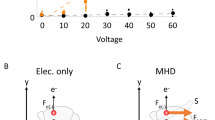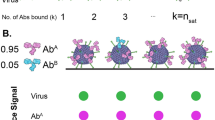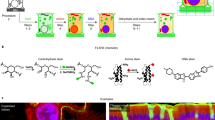Abstract
THE fluorescent antibody conjugate technique recently developed by Coons1 has already proved of great value in the study of biological problems. In this technique, a fluorescent substance is covalently linked to an antibody, and the antibody conjugate is allowed to react with cells or tissue containing its homologous antigen. The antigen is then detected and localized by observing the fluorescence in an optical microscope. For many reasons, it is desirable to extend this method to the sub-cellular level with the resolution attainable in the electron microscope. In order to achieve this purpose, however, it is necessary to confer sufficient electron density upon an antibody molecule, without inactivating it, to render it visible in the electron microscope.
This is a preview of subscription content, access via your institution
Access options
Subscribe to this journal
Receive 51 print issues and online access
$199.00 per year
only $3.90 per issue
Buy this article
- Purchase on Springer Link
- Instant access to full article PDF
Prices may be subject to local taxes which are calculated during checkout
Similar content being viewed by others
References
Coons, A. H., Intern. Rev. Cytol., 5, 1 (1956).
Granick, S., Chem. Rev., 38, 379 (1946).
Farrant, J. L., Biochim. Biophys. Acta, 13, 569 (1954).
Author information
Authors and Affiliations
Rights and permissions
About this article
Cite this article
SINGER, S. Preparation of an Electron-dense Antibody Conjugate. Nature 183, 1523–1524 (1959). https://doi.org/10.1038/1831523a0
Issue Date:
DOI: https://doi.org/10.1038/1831523a0
This article is cited by
-
In situ strategy for biomedical target localization via nanogold nucleation and secondary growth
Communications Biology (2021)
-
FerriTag is a new genetically-encoded inducible tag for correlative light-electron microscopy
Nature Communications (2018)
Comments
By submitting a comment you agree to abide by our Terms and Community Guidelines. If you find something abusive or that does not comply with our terms or guidelines please flag it as inappropriate.



